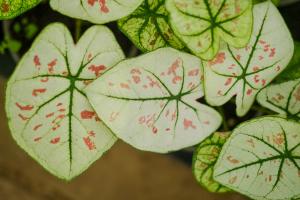Perennial Plants: A Guide to Understanding Their Nature
Have you ever heard of the term 'perennial plant' and wondered what it meant? In this article, we will explore the nature of perennial plants and what makes them different from other types of plants. By the end of this article, you will have a greater understanding of what a perennial plant is and why it is so unique.
Defining Perennial Plants
Perennial plants are defined as plants that live for more than two years and come back year after year without needing to be replanted. Unlike annuals, which die at the end of their growing season, and biennials, which take two years to complete their life cycle, perennials have a longer life cycle.
Perennial plants have a deeper root system than annuals or biennials. This allows them to survive through tough weather conditions such as droughts or frost. Perennial plants are also able to store more energy in their roots during their off-season, which helps them to grow back stronger the next year.
The Advantages of Perennial Plants
One of the main advantages of perennial plants is that they save gardeners time and effort. Since they come back every year, there is no need to replant them. Perennials also require less maintenance than annuals or biennials. They do not need to be replanted every year, and they also require less water and fertilizer than other types of plants.
Perennial plants also offer a wider variety of colors, shapes, and sizes than annuals or biennials. This means that there are more options for designing a garden or outdoor space. Additionally, perennials provide a habitat for wildlife such as pollinators, which is important for the health of our ecosystems.
Examples of Perennial Plants
There are many different types of perennial plants, ranging from flowers to shrubs to trees. Some popular examples of perennial plants include:
Roses
Daffodils
Lavender
Hostas
Daylilies
Black-eyed Susans
Coneflowers
Peonies
Hydrangeas
Lilacs
As you can see, there are many different types of perennial plants to choose from, each with its own unique characteristics and benefits.
Caring for Perennial Plants
Caring for perennial plants involves providing them with the proper soil, water, and sunlight. Perennials prefer well-drained soil with a pH between 6.0 and 7.0. They need to be watered regularly, especially during their growing season, but be careful not to over-water them. Perennials also require at least six hours of sunlight per day, so make sure to plant them in a spot that receives adequate sunlight.
Perennial plants may also require pruning or deadheading to keep them neat and healthy. Pruning involves cutting back the stems or branches of the plant, while deadheading involves removing dead flowers to encourage new growth.
Conclusion
Perennial plants are a wonderful addition to any garden or outdoor space. They offer numerous benefits, including saving time and effort, providing a wider variety of options for designing a space, and serving as a habitat for wildlife. By providing them with the proper care, you can ensure that they will come back year after year and continue to beautify your space.

 how many times do yo...
how many times do yo... how many planted tre...
how many planted tre... how many pine trees ...
how many pine trees ... how many pecan trees...
how many pecan trees... how many plants comp...
how many plants comp... how many plants can ...
how many plants can ... how many plants and ...
how many plants and ... how many pepper plan...
how many pepper plan...






























